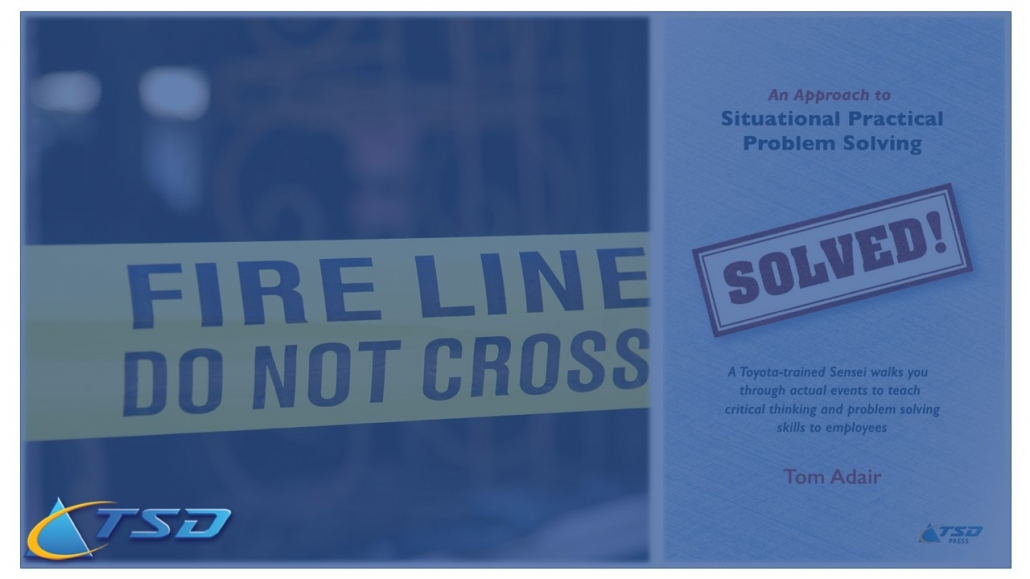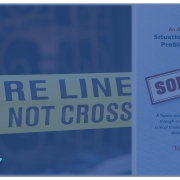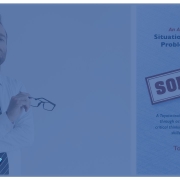Preconceived Notions
Case History of Five Reasons Why We Fail to Solve Problems and What We Can Do About It! — Preconceived Notions
Part 4 of a 5-Part Series
The following are five reasons why we fail in problem solving
- Making assumptions
- Over-relying on experience
- Relying on “experts”
- Coming to the problem with preconceived ideas
- Depending too much on memories
In this blog I will tackle “preconceived notions” and will go into more detail on the other four reasons in other blogs.
“Preconceived notions are the locks on the door to wisdom.”
— Mary Browne
 This post is closely related to Parts 1 and 2 of this series: making assumptions and over-relying on our experiences. What are preconceived notions? According to the dictionary, they are opinions formed beforehand without evidence founded on proof. Holding these opinions creates numerous obstacles to effective problem solving, any one of which can put you on the wrong path to resolution. A few such obstacles are:
This post is closely related to Parts 1 and 2 of this series: making assumptions and over-relying on our experiences. What are preconceived notions? According to the dictionary, they are opinions formed beforehand without evidence founded on proof. Holding these opinions creates numerous obstacles to effective problem solving, any one of which can put you on the wrong path to resolution. A few such obstacles are:
- Face Value – accepting too readily what you believe is true, which may not be so
- Myopia – viewing everything through the same perception lens
- Bias – believing there is only one way, your way, and allowing that biased belief to affect your perceptions
- Selective Hearing – refusing to hear anything contradicting your views, causing you to shut out potentially valuable input from others
- Over Familiarity – being familiar with the issue can make you miss other’s ideas as you feel there is nothing new to learn
- Self-deception – deceiving yourself into believing you’re right, and everyone else adopts your version of reality
Apartment Fire Example of Preconceived Notions
Early in my career I was a fire inspector. I was called to an apartment fire that involved the whole building. While interviewing several witnesses, I was approached by the fire department training chief who was already on the scene. He drew my attention to one individual who he thought looked suspicious. The chief said this person looked like an arsonist and he was on the scene when the first fire engine arrived. Moreover, he seemed overly interested in everything that was going on at the fire scene. He suggested I go talk to him. The chief was convinced the fire was arson and this was the arsonist.
I was surprised to see so many preconceived notions draw the chief to an opinion so quickly. Unfortunately, it was the wrong one. I told him that I already interviewed the “person of interest.” It turned out that he was the owner of the building. He was on the scene with the first engine because he was the one who called the fire department in the first place. He was “overly interested” in everything that was going on because he was afraid his insurance wasn’t enough to cover all the losses. A few hours later we found the cause of the problem; it was a worn out electrical cord.
Lessons Learned and Call to Action
- Get the Facts – Just because someone looks like an arsonist doesn’t mean they are one, there is no one arsonist “look.” It should go without saying that prejudging someone based on his or her appearance (or a situation based on your first impression) can lead you to the wrong conclusion. Get all the facts first.
- Unconscious Influence – The chief formed a preconceived notion about the cause of the fire without evidence to support the claim. As a first step, become aware of your biases and unconscious influences. Next, check their soundness with facts and other people.
- Pay Attention to the Evidence – The training chief didn’t interview anyone to form his opinion. It was all assumption based on his erroneous notions. He ignored evidence that should have led him to the conclusion that his preconceived notions were wrong. His version of reality was flawed. Check your version of reality with others, be alert to the natural tendency toward self-deception, and be ready to integrate new information in order to adjust your opinions.








